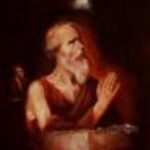It is rare to find a unique story that is both interesting and has enough depth that it can be reread without getting bored. Creating a series that maintains that quality is even rarer. Paul of Dune is not comparable to the original Dune novel, but it is still a solid story.
Frank Herbert wrote six novels in the Dune series. The last one Charterhouse Dune has an unsatisfying ending leaving the fate of many characters and the survival of humanity unknown. Frank Herbert’s son Brian Herbert and Kevin J. Anderson ended the series by writing books seven and eight based heavily on Frank Herbert’s outline and notes. In Paul of Dune they fill in the gaps between the first novel Dune and the second novel Dune Messiah.
Some of the basic outline of the story is already known by those who have read the series. There is never any doubt that Paul, Chani, Stilgar, Jessica, and Princess Irulan will survive as they appear in Dune Messiah. Readers of the Dune series will also be able to eliminate many possibilities as incompatible with the rest of the series. This is not a fatal flaw and there is still suspense in finding out the details.
Near the beginning of the novel Paul makes Princess Irulan, his wife in name only, his biographer. For the rest of the novel the story switches between Paul’s story as a boy and his current rule and the jihad he has started. More than any of the other Dune novels Paul of Dune is a character study. While the plot is important the novel is very much the examination of a man who is beginning to see the dark side of his own rule and the consequences of his decisions.
In Frank Herbert’s essay “Dune Genesis” he states his distrust of heroes and warnings about the cost of blindly following heroes and charismatic leaders. Brian Herbert and Kevin J. Anderson maintain this view with a novel that shows us not only Paul’s flaws, but his doubts. Paul has become uncomfortable with the brutality of the jihad and the actions being taken in his name. He is growing tired of the religion surrounding him.
Paul of Dune shows Paul making mistakes. He sends Gurney to the Harkonnen homeworld Giedi Prime not realizing the pain it causes Gurney. Paul still has the humanity and humility to reassign Gurney after being made aware of his mistake. Near the end of the novel he and those around him make a huge mistake. Princess Irulan states she will use it in support of the myth surrounding Paul, but the reader can see that it really shows his flaws and limitations.
Paul of Dune shows Paul’s relationships with those around him. Paul’s loving relationship with Chani is contrasted against his more complex relationship with Princess Irulan. We see Princess Irulan come to respect Paul’s love of Chani and her realization that it is some of the only comfort he has left. Paul’s relationship with his mother is warmer than it was for the latter parts of Dune.
The political, religious, social, economic, and environmental commentary of the original Dune novels is present, but less predominant. The focus instead stays on Paul’s personal journey and to a lesser extent the personal journeys of those in contact with him. The novel includes additional information about the relationship between Duke Leto Atreides and Jessica and has a large subplot involving Fenring and his family.
The flashbacks of Paul as a boy are the weaker passages. They still have merit because they show how his childhood influenced the man he became, but they do not provide the depth of the passages that take place during the current time. Some readers may enjoy them for their descriptions of Duncan Idaho as a younger man.
Paul of Dune is a good novel, but is more likely to be enjoyed if one approaches it as an entertaining novel rather than a classic.
Frank Herbert, “Dune Genesis”. Official Dune Website.


